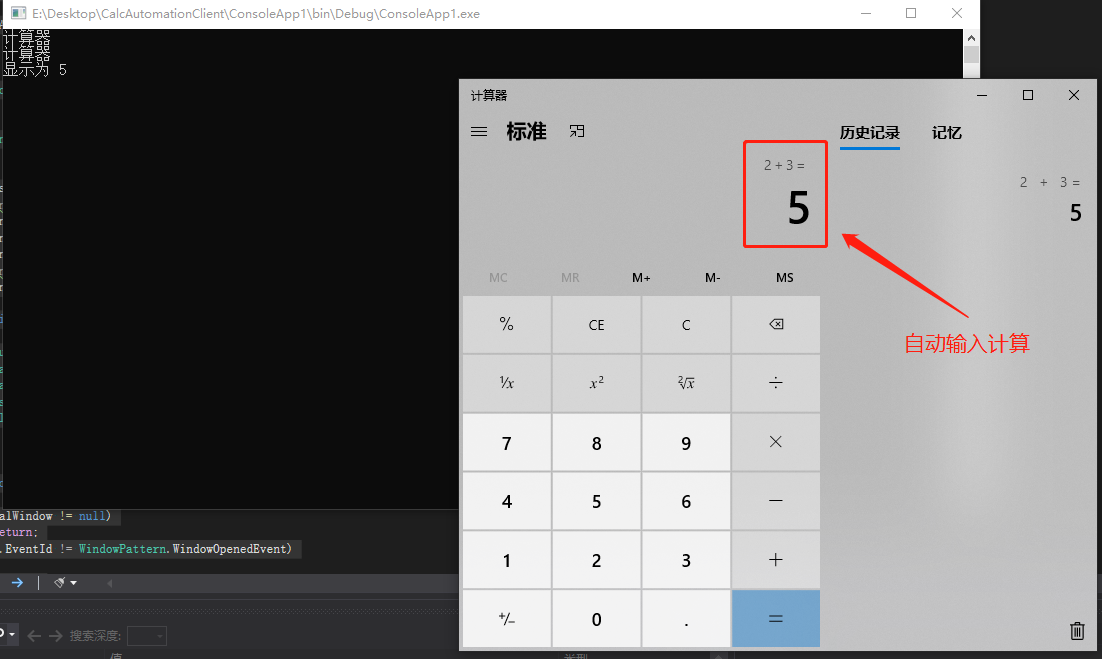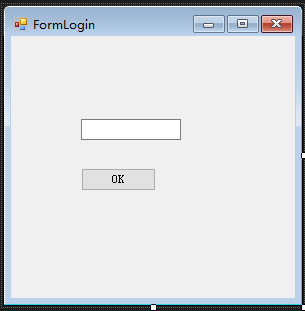文章目录
1、文章一:
题记
本文简述如何利用appium对Windows桌面应用程序进行UI自动化测试。
UI自动化测试
所谓UI自动化测试,就是模拟一个用户,对应用程序的UI进行操作,以完成特定场景的功能性集成测试。
要对Windows桌面应用程序进行UI自动化测试,目前可选的技术主要是两种:
VS自带的CodedUI Test和Appium+WinAppDriver。
但是,微软已经宣布VS2019将是带有CodedUI Test的最后一个版本,且在面对某些复杂场景的时候有点力不从心。
而Appium作为移动应用主流的UI测试工具,已经被业界广泛采用,且相关的接口是标准化的,因此微软对其进行了扩展(即WinAppDriver),让Appium可以支持包括Universal Windows Platform (UWP), Windows Forms (WinForms), Windows Presentation Foundation (WPF), and Classic Windows (Win32)之内的Windows桌面应用。所以采用Appium来作为Windows桌面应用程序UI自动化测试的工具是最佳选择。
要完成UI自动化测试的大致步骤如下(你首先需要一台Windows 10的PC):
- 准备好待测试的Windows桌面应用程序。
- 到 https://github.com/Microsoft/WinAppDriver/releases 下载WinAppDriver的安装包,进行安装。并启用Windows 10的开发者模式。从安装目录(比如:C:\Program Files (x86)\Windows Application Driver)来启动WinAppDriver。
- 用你喜欢的测试框架创建UnitTest项目,在项目中引用Appium.WebDriver这个Nuget包。
- 编写测试用例,执行测试。
整个用例的编写也相对简单:
- 使用DesiredCapabilities来设定要测试的目标应用。
- 使用WindowsDriver来声明测试的会话。
- 通过测试会话查找对应的UI元素,对UI元素进行SendKeys(模拟填写内容)和Click(模拟点击)等操作,或者获取UI元素的相关Property和Attribute来进行验证。
- 编写测试最挑战的地方就是在于如何查找到UI元素,我们可以借用Windows SDK里面的inspect.exe这个工具来辅助我们查找。 工具的位置在C:\Program Files (x86)\Windows Kits\10\bin里面的特定版文件夹中。用法是先启动应用程序并导航到待测试的界面,启动这个工具就会获得桌面上所有窗口的UI元素层级关系,并通过焦点等方式导航到要查找的UI元素上。查看相应的信息,并采用适合的查找方式。具体的查找方式可见:https://github.com/Microsoft/WinAppDriver#supported-locators-to-find-ui-elements。 选择适合的查找方式有时候需要多尝试几种,有些UI元素只能用特定的方式来查找,比如html的input button只用FindElementByName ,而html的button就可以用FindElementByAccessibilityId 。
测试用例的编写可以参考WinAppDriver源代码自带的Sample,也可以参照我的示例:https://github.com/heavenwing/WindowsAppUITestSample。
在我的这个示例当中,目标应用采用的是Hybrid方式运行(即通过WebBrowser来嵌入html,并用C#进行行为操作),考虑到这种应用程序可能是多个函数库组装在一起,所以测试项目理应也是多个项目组合的(即功能函数库对应一个测试项目),并且其他测试项目可以复用公共的测试步骤(比如:列表页面复用登录的测试步骤)。
参考
https://www.cnblogs.com/redmoon/p/11401030.html
2、文章二:
参考:https://blog.csdn.net/The_Eyes/article/details/73432716
最近研究自动化测试,看了一下UI Automation的微软例子,表示太老了,遇到各种问题,
UI Spy 好像已经被放弃了,可以用inspect.exe来代替,win10 的路径为:“C:\Program Files (x86)\Windows Kits\8.1\bin\x64\inspect.exe”
这个用来查询automationId,
官网是以计算器例子,下面是在win10 修改后能运行版本:
usingSystem;usingSystem.Diagnostics;usingSystem.Threading;usingSystem.Windows.Automation;namespaceConsoleApp1{classCalcAutomationClient{AutomationElement calWindow =null;//计算器窗口主窗口元素string resultTextAutoID ="CalculatorResults";string btn5AutoID ="num5Button";string btn3AutoID ="num3Button";string btn2AutoID ="num2Button";string btnPlusAutoID ="plusButton";string btnSubAutoId ="94";string btnEqualAutoID ="equalButton";staticvoidMain(string[] args){CalcAutomationClient autoClient =newCalcAutomationClient();AutomationEventHandler eventHandler =newAutomationEventHandler(autoClient.OnWindowOpenOrClose);
Automation.AddAutomationEventHandler(WindowPattern.WindowOpenedEvent, AutomationElement.RootElement, TreeScope.Children, eventHandler);
Process.Start("calc.exe");
Console.ReadLine();}privatevoidOnWindowOpenOrClose(object sender,AutomationEventArgs e){if(calWindow !=null)return;if(e.EventId != WindowPattern.WindowOpenedEvent){return;}if(sender ==null){
Console.WriteLine("sender is null");return;}
Thread.Sleep(1000);//此处必须等待一下,应该是计算器的等待计算器完全加载,不然控件 找不到AutomationElement sourceElement =null;
sourceElement = sender asAutomationElement;
Console.WriteLine(sourceElement.Current.Name);try{
sourceElement = sender asAutomationElement;
Console.WriteLine(sourceElement.Current.Name);if(sourceElement.Current.Name =="计算器"){
calWindow = sourceElement;}}catch(Exception ex){
Console.WriteLine("ex:"+ ex.Message);return;}if(calWindow ==null){return;}ExcuteTest();}privatevoidExcuteTest(){ExcuteButtonInvoke(btn2AutoID);ExcuteButtonInvoke(btnPlusAutoID);ExcuteButtonInvoke(btn3AutoID);ExcuteButtonInvoke(btnEqualAutoID);string rs =GetCurrentResult();
Console.WriteLine(rs);}privatevoidExcuteButtonInvoke(string automationId){Condition conditions =newAndCondition(newPropertyCondition(AutomationElement.AutomationIdProperty, automationId),newPropertyCondition(AutomationElement.ControlTypeProperty, ControlType.Button));if(calWindow ==null)return;AutomationElementCollection collection = calWindow.FindAll(TreeScope.Descendants, conditions);if(collection ==null|| collection.Count ==0)return;AutomationElement btn = collection[0];if(btn !=null){InvokePattern invokeptn =(InvokePattern)btn.GetCurrentPattern(InvokePattern.Pattern);
invokeptn.Invoke();}
Thread.Sleep(1000);}privatestringGetCurrentResult(){Condition conditions =newAndCondition(newPropertyCondition(AutomationElement.AutomationIdProperty, resultTextAutoID),newPropertyCondition(AutomationElement.ControlTypeProperty, ControlType.Text));AutomationElement text = calWindow.FindAll(TreeScope.Descendants, conditions)[0];return text.Current.Name;}}}
运行结果:
3、重要资源【实例】:
1)已验证可用【非常好的例子,便于理解】
C#自动化测试工具编写(借助API) :https://download.csdn.net/download/luminji/2796362
关键代码

1)自动化测试程序
usingSystem;usingSystem.Collections.Generic;usingSystem.Runtime.InteropServices;usingSystem.Text;usingSystem.Windows.Forms;namespaceWindowsFormsTest{publicpartialclassForm1:Form{publicForm1(){InitializeComponent();}privatevoidbutton1_Click(object sender,EventArgs e){//获取被测试程序的窗口句柄IntPtr mainWnd =FindWindow(null,"FormLogin");List<IntPtr> listWnd =newList<IntPtr>();//获取窗体上按钮的句柄,按钮上的文字为OK IntPtr hwnd_button =FindWindowEx(mainWnd,newIntPtr(0),null,"OK");//获取窗体上全部的子控件句柄EnumChildWindows(mainWnd,newCallBack(delegate(IntPtr hwnd,int lParam){
listWnd.Add(hwnd);returntrue;}),0);foreach(IntPtr item in listWnd){if(item != hwnd_button){char[] UserChar ="StarStar".ToCharArray();foreach(char ch in UserChar){SendChar(item, ch,100);}}}SendMessage(hwnd_button, WM_CLICK, mainWnd,"0");}publicvoidSendChar(IntPtr hand,char ch,int SleepTime){PostMessage(hand, WM_CHAR, ch,0);
System.Threading.Thread.Sleep(SleepTime);}publicstaticint WM_CHAR =0x102;publicstaticint WM_CLICK =0x00F5;[DllImport("User32.dll", EntryPoint ="SendMessage")]publicstaticexternintSendMessage(IntPtr hWnd,int Msg,IntPtr wParam,string lParam);[DllImport("user32.dll")]publicstaticexternIntPtrFindWindowEx(IntPtr hwndParent,IntPtr hwndChildAfter,string lpszClass,string lpszWindow);[DllImport("user32.dll", SetLastError =true)]publicstaticexternIntPtrFindWindow(string lpClassName,string lpWindowName);[DllImport("user32.dll")]publicstaticexternintAnyPopup();[DllImport("user32.dll", CharSet = CharSet.Auto, SetLastError =true)]publicstaticexternintGetWindowText(IntPtr hWnd,StringBuilder lpString,int nMaxCount);[DllImport("user32.dll")]publicstaticexternintEnumThreadWindows(IntPtr dwThreadId,CallBack lpfn,int lParam);[DllImport("user32.dll")]publicstaticexternintEnumChildWindows(IntPtr hWndParent,CallBack lpfn,int lParam);[DllImport("user32.dll", CharSet = CharSet.Ansi)]publicstaticexternIntPtrPostMessage(IntPtr hwnd,int wMsg,int wParam,int lParam);[DllImport("user32.dll", CharSet = CharSet.Ansi)]publicstaticexternIntPtrSendMessage(IntPtr hwnd,int wMsg,IntPtr wParam,IntPtr lParam);[DllImport("user32.dll", CharSet = CharSet.Unicode)]publicstaticexternIntPtrSendMessageA(IntPtr hwnd,int wMsg,int wParam,int lParam);[DllImport("user32.dll", CharSet = CharSet.Auto)]staticexternintGetClassName(IntPtr hWnd,StringBuilder lpClassName,int nMaxCount);[DllImport("user32.dll", SetLastError =true, CharSet = CharSet.Auto)]publicstaticexternintGetWindowTextLength(IntPtr hWnd);[DllImport("user32.dll", CharSet = CharSet.Auto, SetLastError =false)]publicstaticexternIntPtrGetParent(IntPtr hWnd);publicdelegateboolCallBack(IntPtr hwnd,int lParam);}}
2)被测试程序
usingSystem;usingSystem.Windows.Forms;namespaceWindowsFormsToBeTest{publicpartialclassFormLogin:Form{publicFormLogin(){InitializeComponent();}privatevoidbutton1_Click(object sender,EventArgs e){
MessageBox.Show(textBox1.Text.Trim());}}}
运行结果:
2)未验证
C#借助Code UI Automation实现黑盒自动化测试工具: https://download.csdn.net/download/luminji/2839416
和上边的好像一样:
版权归原作者 明如正午 所有, 如有侵权,请联系我们删除。